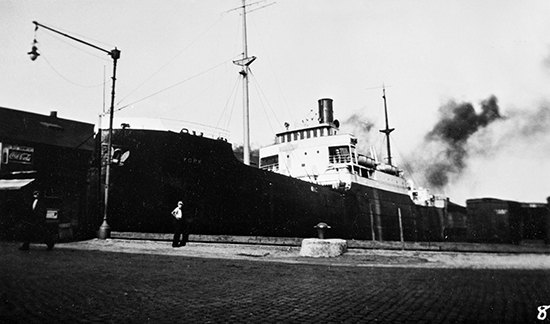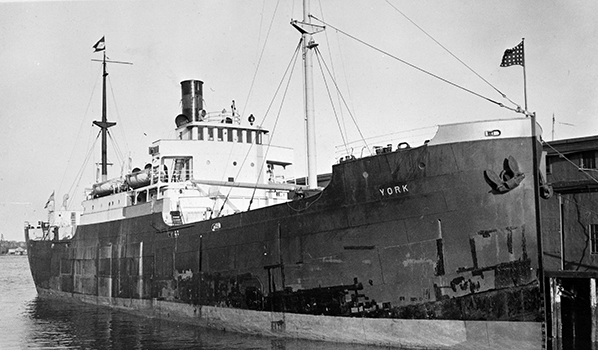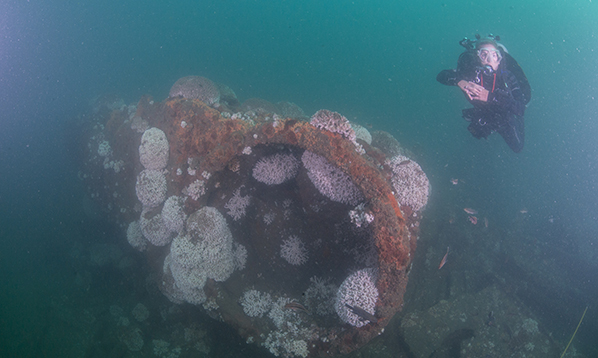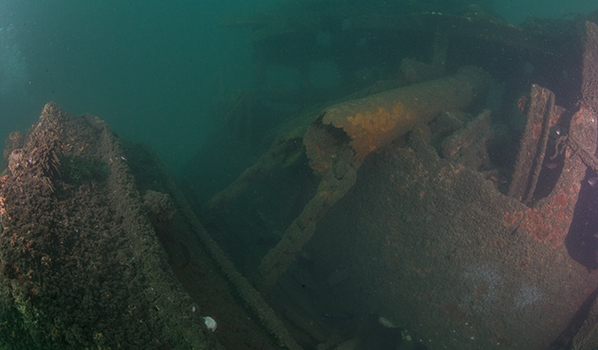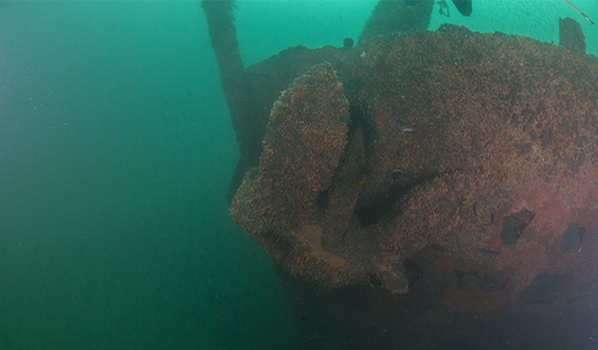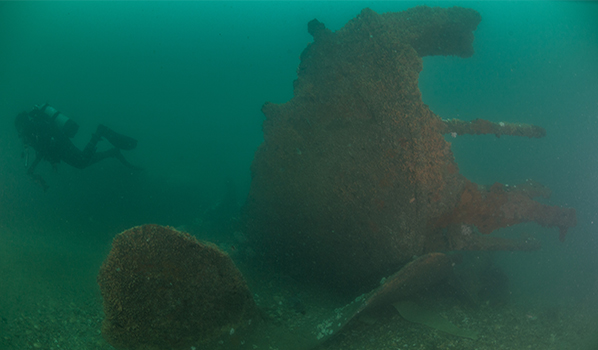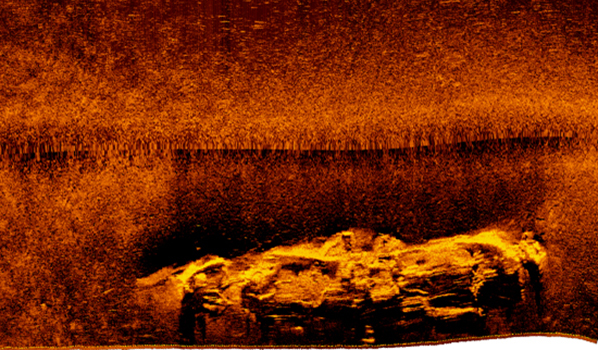Norvana
Ship Stats
Location: 36°4.'1.96"N, 75°13'38.96"W (36.06721, -75.22749)
Depth: 110 feet
Vessel Type: Freighter
Length: 253.4 feet Breadth: 43.8 feet
Gross Tonnage: 2,677 Cargo: Sugar
Built: 1920, Saginaw Ship Building Company, Saginaw, Michigan, USA
Hull Number: 146 Port of Registry: Baltimore, Maryland, USA
Owner: North Atlantic and Gulf Steam Ship Company, New York, New York, USA
Lloyd's Register Details: Steel hull, single screw, three decks, fitted for oil fuel, triple expansion three cylinder engine
Former Names: York (Merchants and Miners Transportation Co., 1927-1941); Lake Gatun (U.S. Shipping Board, 1920-1927)
Date Lost: January 22, 1942
Sunk By: U-66 or U-123 Survivors: 0 of 29 survived (29 dead)
Data Collected on Site: Side scan sonar; still photography
Significance: Casualty of World War II's Battle of the Atlantic
Wreck Site
After sinking, Norvana's wreck site became a navigational hazard, and in 1944, records cite that the wreck site of Norvana was salvaged by the U.S. Navy. During the salvage operations, Navy divers removed the vessel's bell, which was marked Lake Gatun, one of Norvana's former names, thus positively identifying the wreck site as that of Norvana.
Today, there is a considerable amount of remaining structure still visible. Norvana's bow is broken off from the vessel, but remains intact. Anchors are still attached in their hawse pipe, which is one of the higher relief sections of the wreck site.
Moving aft, there is a section of sand that quickly turns into the midship section with broken machinery pieces visible. Evidence of a windlass and broken deck plating scatter this area. Moving further aft, the engine and boilers are visible. At the fantail stern, it is noted that it is twisted and laying to the port side. The steering quadrant and propeller are also visible.
Overall, there are considerable amounts of remaining structure visible of Norvana. There are areas of high relief, particularly at the bow and stern, as well as large sections of deck structure that remain throughout the site.
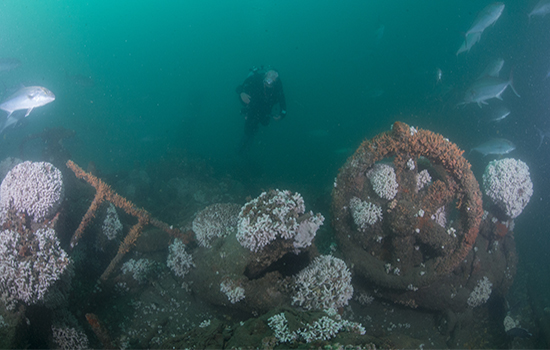
Historical Background
Norvana, a 1920 freighter, operated along the East Coast and into the Caribbean through the beginning of World War II. In late January 1942, Norvana, left Cuba bound for Philadelphia, Pennsylvania, carrying a cargo of sugar and 29 crewmembers. As the vessel was transiting north near Cape Hatteras, North Carolina, it was attacked by a German U-boat. Unfortunately, this is where the story begins to conflict.
The vessel never sent a distress signal and was reported overdue and presumed lost by the company. On January 21 there was a report from a U.S. Coast Guard plane indicating that a derelict vessel had been spotted, and it is presumed to have been Norvana. However, since no distress signal had been sent, no one knew for sure how the ship sank. According to one account, U-66 reported on January 21 that it had sunk a ship about Norvana's size. The records also indicate that the U-boat had fired two torpedoes at the vessel. A second and conflicting account comes from records related to U-123, which show that U-123 was also operating in the same area around that time, and they reported sinking a ship, but on January 20.
Regardless of which U-boat sank Norvana, the only evidence ever recovered of the vessel being lost were the remains of an empty lifeboat located on March 7, 1942.
